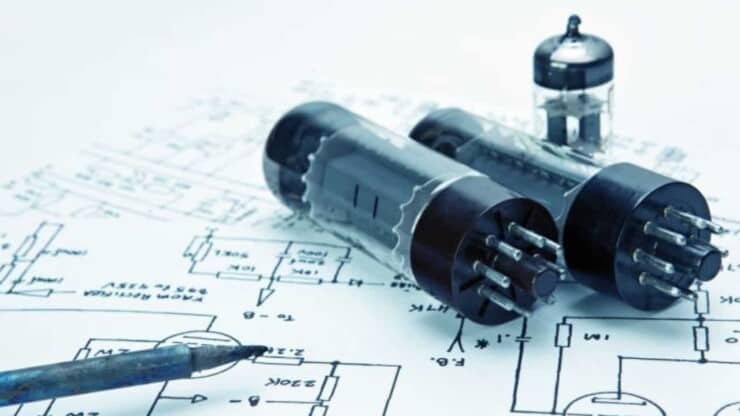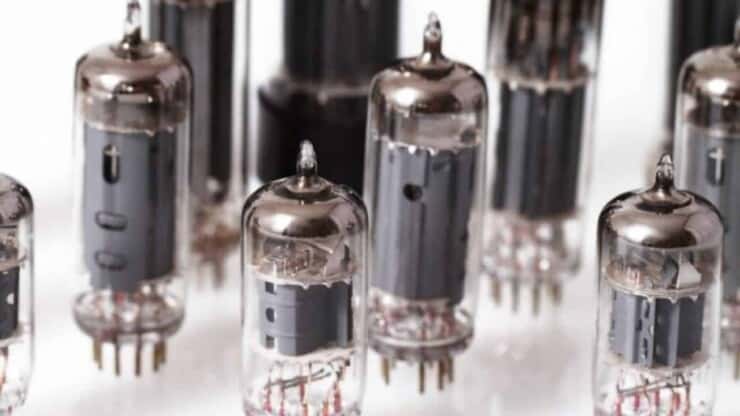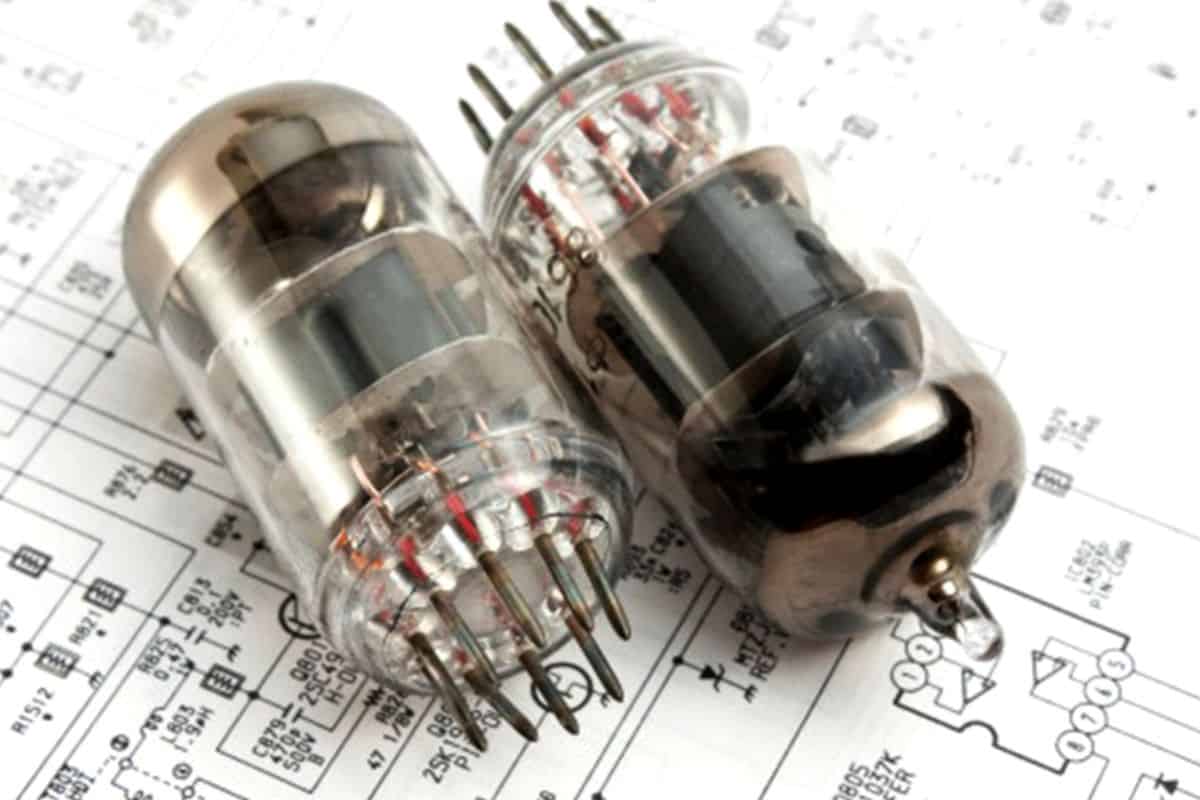Do you work with your tube amps, and now you’ve reached a point where you have to find out how to discharge a tube amp? If so, then you’re at the right place.
Discharging a tube amp involves using a multimeter to drain out the charge inside. Capacitors are capable of holding the charges for a long period of time, especially if the circuit doesn’t contain a bleeder resistor. It can get rid of the electric charge once the device is powered off.
In this article, you’ll get to know all about discharging tube amps, how to discharge a tube amp, a step-by-step guide on how to drain capacitors tube amp, and more. Stick around to get all the answers that you’re looking for.
Why do capacitors in a tube amp have to be discharged?
Capacitors are common components in modern-day electronic devices. They are capable of holding a massive amount of charges for long periods of time. These charges can be released at once to the components that might need them. Capacitors can be used for filtering specific signal frequencies.
Before repairing your tube amps, it’ll be important to know how to discharge a tube amp. This is done by first discharging any capacitors. The large capacitors present in tube amps hold enough charge to seriously injure you or even potentially kill you. This is the case whether the device has been plugged in.
Capacitors can hold onto charges for longer durations of time, especially if the circuit doesn’t have a bleeder resistor capable of getting rid of the electric charges when the device has been powered off. If you’ve come in contact with the terminals of a charged capacitor, the charges might pass through your body. Sometimes, this could happen over a relatively small distance, such as when your fingers are very close to the terminals and the charges arc over.
Depending on the charges in the capacitor, it can lead to slight tingling, mild shocks, burns, serious injuries, or in the worst case, death. The latter can happen when a current passes through your heart and ends up stopping it.
>>> Click here to read our review about the Top 15 Best Tube Amps <<<
Which capacitors are the most dangerous ones?
It’ll be important to mention that capacitors themselves actually don’t pose much danger. Instead, it’s the charge present inside the capacitors that can harm you. Empty capacitors are usually safe. That is why it’s a smart option to know how to drain capacitors tube amp to be on the safer side.
With that said, certain capacitors are capable of holding more charges than others. For that reason, you must be more careful with capacitors capable of holding a huge amount of energy. There’s a rule for this type of energy that can harm you, while there are other factors that matter too. For instance, skin thickness, skin conductance, surface area, and hydration levels that you touch will lay a part in how well current travels through your body.
In practice, it is the high-volume and high capacity electrolytic capacitors typically found on the primary AC side of power supplies that you must be aware of. These are capable of causing serious harm when fully charged.
Which capacitors are considered to be safe?
Generally, capacitors rated up to almost 50V are considered to be fairly safe. They could still hurt you, but don’t have enough potential to start conducting in your body and potentially kill you. One thing to watch out for would be that a capacitor is rated up to 30V, as they can still work at higher voltages. The voltage rating alone will not tell you the entire story.
Similarly, capacitors rated for a safe voltage but with a large capacity, will still pack a ton of energy. Shorting out the terminals will create serious heat and sparks, and might even cause an explosion that sprays electrolytic liquid around. This does not occur with the typical run-of-the-mill capacitors. When you start working with low-voltage capacitors having capacitances of 1 mF/1000 uF or above, this will be something to be aware of.
Step-by-step guide on how to drain capacitors tube amp
Discharging tube amp capacitors will come down to connecting a resistive load to the capacitor’s terminals. This will create a path for the current to get drained out. Meanwhile, it will allow the resistive load to convert the present electrical energy into thermal energy. Commonly used resistive loads will be used as a power resistor or a light bulb. Another common method of draining capacitors will be by shorting them. This is done when you place an insulated screwdriver across the terminals. When you are working with amps with high-voltage capacitors, it can be quite problematic.

The insulated screwdriver will create an extremely low resistance path, allowing a high current flow (Ohm’s law). The current will be inversely proportional to resistance. If a capacitor releases all of its energy rapidly, it can be dangerous. Instead of using a screwdriver, you should use a proper resistive load for discharging. This way, the amount of current flowing through will be restricted.
Instructions to discharge capacitors
Step 1: Disconnect the power sources from the capacitors. It will be important that the capacitors aren’t actively being powered. Otherwise, discharging the capacitor will pose quite a big challenge. If there is a power cable, you should unplug it from the wall outlet.
Step 2: Identify the capacitor on the circuit board. The most dangerous ones will be the aluminum electrolytic capacitors that are used for high voltages. They will look like cylinders that have a metal top.
Step 3: Turn over the circuit board to gain access to the capacitor terminals. You should avoid touching exposed metal parts on the circuit board with your hands.
Step 4: Connect the leads of the resistive load to the terminals of the capacitors. There are some caveats too, so ensure that you check the specific type of resistor that you intend to use.
Step 5: Give the capacitors enough time to discharge properly. Typically, this will not take more than a few seconds.
Step 6: Take the multimeter and set the multimeter to the highest voltmeter settings.
Step 7: Connect the multimeter probes to the terminals of the capacitor. The polarity would not be an important factor.
Step 8: Check the voltage reading on your multimeter screen. If the reading is not close to 0V, the capacitor will need some more time to discharge.
Important things to consider
When you’re using a simple resistor for discharging capacitors, there will be many things that you should keep in mind –
- Proper insulation – You shouldn’t touch the resistor leads or any metal parts with your bare hands. Instead, you should use a pair of high-quality alligator clips for connecting the leads to the capacitor.
- Resistor value – When you have to choose a resistor to discharge capacitors, it’ll be important to pay close attention to wattage and resistance.
- Wattage – It’s essential that the resistor is capable of dealing with the amount of power that is going through it. The typical through-hole resistors come rated at 0.25W, which isn’t enough for discharging capacitors.
The formula to calculate the power is P=V2/R, where P denotes power, V denotes the voltage of the capacitor, and R denotes the resistance of the resistor.
Once you do the numbers, you’ll find that resistors having a wattage of 5W are nearly always sufficient for commonly used capacitors.
- Resistance – The smaller the resistor value, the more current will flow and the faster the capacitor will discharge. Speed isn’t something that you should be looking for. However, most people prefer to have their capacitors drain slowly and in a more controlled manner.
To keep everything safe, you’ll want to adjust the value of the resistor based on the voltages that you’re working with. The higher the voltage, the higher will be the value of the resistor. For most capacitors, something with a 2 kΩ will be sufficient. However, when working with capacitors of over 400V, you should prefer using a resistor of 20 kΩ instead.
- Using a capacitor discharge tool – When using capacitor discharge pens, you don’t need to worry about resistor values and other similar things. It will tell you on the box what size of capacitors it can deal with safely.
Capacitor discharge tools are still resistors to an extent. However, these come with a neat set of insulated leads and one or more LEDs. The LEDs will indicate when the capacitor isn’t completely drained while removing the need for any manual measuring.
Due to the LEDs, it’ll be important to connect the discharge tool with the right polarity. It means you should connect the black lead to the capacitor cathode terminal, which will be indicated by the (-) symbol on the capacitor’s body.
How to discharge a tube amp?
Inside a tube amp will be circuits and connections that hold a lethal voltage at different points in the critical path. An important thing that you should understand with a tube amp is that these components will hold voltage even if the amp is turned off.
The capacitors store high voltages that could remain in the amp long after you last used it or powered it on. If you don’t have a proper understanding of what you’re doing when interacting with these components, it’ll be likely that the voltage gets released through you. This can impede your future enjoyment of the tube amp, as you’ll basically be dead. Opening up an amp without following the safety precautions is one of the most dangerous things that you can do. It must be taken very seriously.
If you haven’t got any prior experience handling the electrical components of an amp or don’t know the proper ways of maintaining safety and mitigating risk, you shouldn’t attempt opening up your amp. Any repair work must be handled by a technician. You can use the internet and find a reliable technician or local repair shop near you.
However, if you have enough knowledge, you will get the right instructions here. Discharging a tube amp will involve discharging a capacitor by attaching the leads of the capacitor to the resistor. This will allow the voltage to drain out. Here are the steps on how to discharge a tube amp safely and securely.
1. Measure using a multimeter
You’ll need to start off by understanding how much voltage is contained in the capacitor. This means it’s time to bring out the multimeter. Make sure that you’re setting your multimeter to the highest DC voltage setting.
After that, connect the multimeter probes to the two posts that are sticking out of the top of the capacitor. You should hold the leads on the post when you are measuring the voltage on the multimeter. A rule of thumb is anything over 10V will be dangerous enough to harm you.
2. Decide what size of resistors do you want to use
Ohms Law states that the current is inversely proportional to resistance. You’ll want to use resistors that are high on megaohms if you’re dealing with a large amount of voltage. This way, the current will reside within the bounds of the resistance. If you’re using too small of a value of the resistor, it’ll result in a dangerous current value.
3. Connect the resistors to the capacitor
You should attach the meter loads to the resistor, allowing you to measure the voltage. You should be using alligator clips for attaching on the end of the connector wires to the resistor.
Then, take the other end of the wires and attach them to the posts of the capacitor. Remember, the capacitors are still love. Moreover, you shouldn’t even think of touching the posts without proper gloves
Once the wires have been connected to the capacitor, you’ll see the display on the multimeter start going down. How long it’ll take to complete the discharge will depend on the amount of voltage stored in the capacitor. Once the multimeter goes down to zero, you’ll be able to disconnect the capacitor from the resistor.
Important safety rules to live by when dealing with a tube amp
Once you start working with your amp and performing dangerous tasks like discharging it, you’re in risky territory. You would have probably heard all the horror stories about people not being careful about working inside the amp. It shouldn’t be underestimated that the capacitors in the amp store enough charge that can kill you.
While this is true, there are precautions and safety measures you can take to prevent any horror stories from involving you. A little common sense will go a long way when you’re working around potentially fatal voltages. Here are some of the safety rules to live by when you’re working with a tube amp.
Never work on a tube amp while talking to someone, either on a telephone or in-person. You could end up getting severe shocks by accidentally touching things when someone is distracting you. You should never work while distracted, regardless of the circumstances.
When probing a live guitar amp, you should keep one hand in your pocket. It’s actually the current across, going by the way of your arms and into your heart, that can kill you.
You shouldn’t wear jewelry of any kind on your wrists or hands. Silver and gold are highly conductive. Moreover, you shouldn’t be working on your tube amp while having your wedding ring on.
You should always unplug your amp before you go in to solder something. You shouldn’t really be dependent on the power switches.
Moreover, you shouldn’t chew on the length of solder when you’re contemplating your next move. Ingesting might lead to killing your brain cells.
Use a variac for bringing up an amp after mods or on custom-builds. You should then monitor the current carefully and shut it down in case it rises quickly at low voltages. Alternatively, you should make a fixture with the light bulb in a socket that’s in series with one side of the AC line. In case the amp has a major short, the bulb will light up instead of blowing up the fuse or vaporizing the new power transformer.
Always wear safety glasses when you’re working on tube amps. If you haven’t seen what happens when you wire in a small or large electrolytic capacitor backward or exceed its working voltage, you will be in for the scare of your life. Hint – you will likely end up with a lot of smoke and tar after rapid explosive decompression. Moreover, there will be a launched projectile almost the size of a large shell casing. If you end up getting hit in the face with exploding mixture, not only will your face get serious burns, but you’ll also sustain serious eye damage.
You should be sure that you turn off the power to the amp before you discharge the electrolytic filter capacitors. Otherwise, you’ll be in for an unpleasant surprise.
When you’re clipping wires or component leads with diagonal pliers, you should point them away from your body. The cut leads will fly off with amazing velocities and can damage your eyes easily. This is why you should prefer using safety glasses.
Tubes will get hot, extremely hot, especially power tubes. You should never touch them, even accidentally.

Electrolytic filter capacitors can often hold lethal charges. You should be sure that you discharge them before you work on a tube amp. It can be done by shorting the “+” side to the “-“ side or the “+” side to the chassis using a wire or a screwdriver. This will result in a big spark and a loud noise, which will attract the attention of any onlookers. The larger the value of the resistor, the longer it’ll take for discharging the capacitors and the less of a spark you’ll be seeing.
It’s worth noting that many amps incorporate “bleeder” resistors. They drain the capacitor charges automatically within a few minutes after the amp is turned off. You shouldn’t depend on the resistor for doing its job.
You should get your co-worker or friend to take a CPR course. Moreover, you shouldn’t argue even if they ask you to pay for the course.
You shouldn’t work on tube amps around children. You’ll probably be embarrassed when the pick up the language you’re using when you accidentally touch live wires.
You shouldn’t install tubes with the power on. In case the glass breaks, you’ll end up coming in contact with high voltages. Getting a shock after a nasty cut will add insult to injury.
You shouldn’t solder in your underwear or shorts. Always appropriate clothing with all the necessary safety equipment and gear.
Conclusion
Thank you for reading. Hopefully, now you know a lot more about discharging tube amps, how to discharge a tube amp, a step-by-step guide on how to drain capacitors tube amp, and more. It will help if you remember that discharging a tube amp will involve using a multimeter to understand how much voltage is present in the capacitor. Then, you should use resistors to drain out the voltage from the capacitors. Capacitors are capable of holding charges for a long period of time. If the capacitors don’t have a bleeding resistor, it’ll get rid of the electric charge once the device gets powered off.
Image Credit:
Featured Image: Soundsation
Images: Prime Sound



